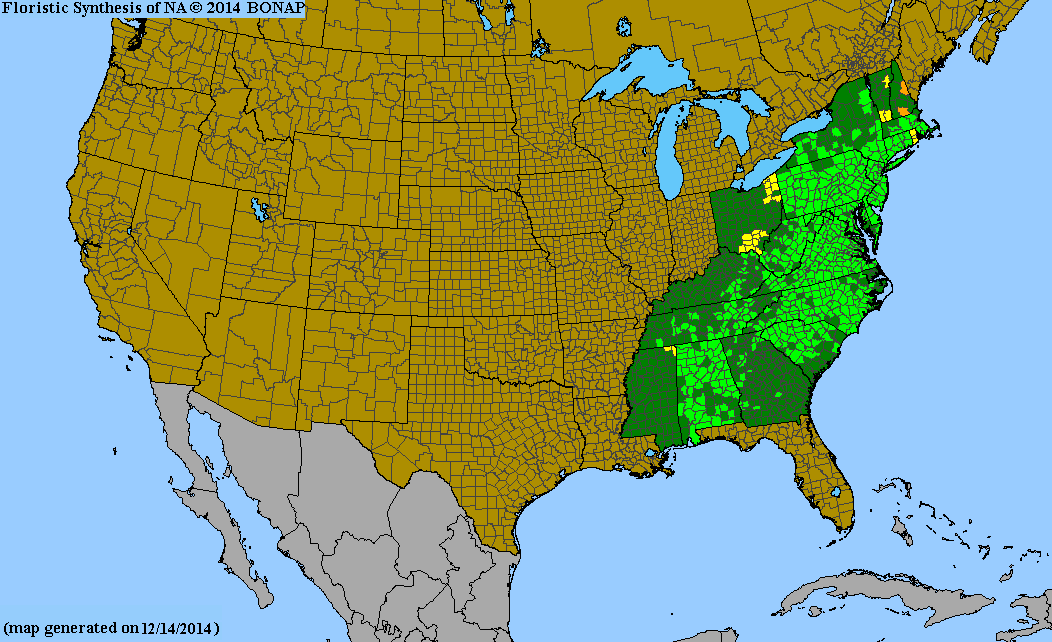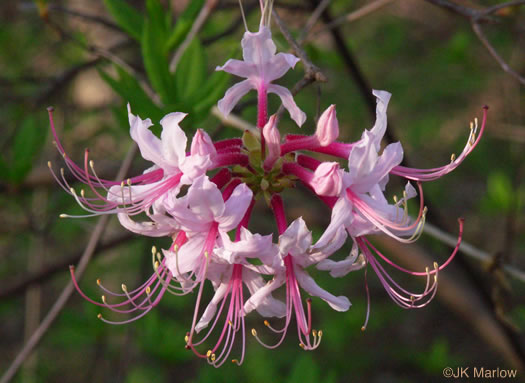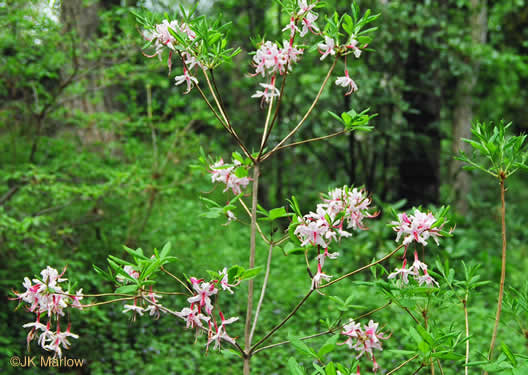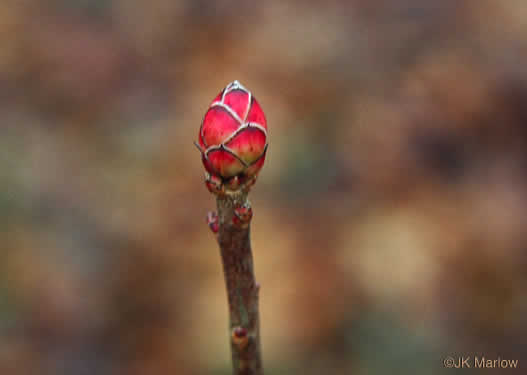Ericaceae
wild azalea
Rhododendron periclymenoides
Synonyms
Rhododendron nudiflorum
Azalea nudiflora
Other Common Names
pinxterflower, pinxter azalea, election pink
Plant Type
Shrub (less than 10 ft)
Life Cycle
Perennial
Typical Size
4-10 ft. tall
4-5 ft. wide
Tolerant of
Occasional Flooding
Inolerant of
Direct Afternoon Sun
Propagation
By seed
Plant Propagation Notes
No pretreatment is necessary.
Plant Planting Notes
Provide up to 5 ft spacing.
Plants/Diseases
Several insects may infect plants such as aphids, borers, lace bugs, leafhoppers, mealybugs, mites, scale, thrips, and white fly. Disease infections include cankers, crown rot, root rot, leaf spot, rust, and powdery mildew. It is not deer resistant.
Wildlife Benefits
Nectar/pollen source for pollinating insects, Nectar source for hummingbirds
Leaves
Leaves alternate, elliptical to oblong with entire or serrate margins.
Flowers
Mostly pink, sometimes white fragrant flowers on a raceme.
Fruit
Capsule
Toxicity
Low toxicity if ingested.

USDA Hardiness Zones
4, 5, 6, 7, 8, 9
Light Exposure
Part Sun/Shade, Full Shade
Soil Moisture
Moist
Soil Drainage
Well-drained, Poorly Drained
Soil pH
Acidic (less than 6.0)
Native in South Carolina?
Yes
Plant Native Habitat
Moist to dry slopes and along streambanks.
Global Conservation Status (NatureServe)
Secure (G5)
Federal Conservation Status (USFWS)
Not Listed
Distribution Notes
Uncommon in the coastal plain. Common in the sandhills, piedmont, and mountains.



